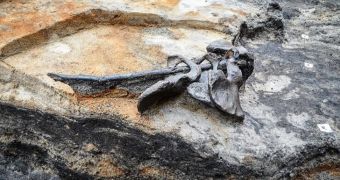Researchers with the Aarhus University in Denmark claim to have found evidence that, not too long after death, the bodies of warriors who passed away about 2,000 years ago in present-day Denmark were horrifically desecrated during a bizarre religious act.
As detailed in a press release concerning this investigation and its findings, the bodies in question were discovered fairly close to the Alken Enge wetlands in East Jutland, Denmark, back in 2012.
Having stumbled upon these human remains, it did not take archaeologists very long to figure out that they belonged to warriors who were part of same army and whose corpses were merely thrown into the bogs close to said wetlands after losing a battle.
The battle that resulted in the death of this entire army is believed to have taken place sometime during the Iron Age, at a time when the Roman Empire was gradually expanding northwards, information shared with the public says.
In those days, conflicts between the Romans and the Germanic tribes that inhabited the lands they were encroaching on were fairly common. Evidence indicates that Germanic tribes also used to rage war one on the other 2,000 years ago.
The warriors whose remains were unearthed in the proximity of Denmark's Alken Enge wetlands in 2012 are said to have died during one such battle between two Germanic tribes whose members weren't exactly keen on making friends with their neighbors.
While examining the bones of the warriors, researchers found that, roughly 6 months following their death on the battlefield, the bodies had all the flesh removed from them. The remains were then mixed with body parts of butchered animals and thrown into the bogs together with food sacrifices.
“We have found a wooden stick bearing the pelvic bones of four different men. In addition, we have unearthed bundles of bones, bones bearing marks of cutting and scraping, and crushed skulls,” researcher Mads Kähler Holst from Aarhus University said in a statement.
Furthermore, “We are fairly sure that this was a religious act. It seems that this was a holy site for a pagan religion – a sacred grove – where the victorious conclusion of major battles was marked by the ritual presentation and destruction of the bones of the vanquished warriors.”
Courtesy of Roman written records documenting the behavior of Germanic tribes, historians and archaeologists have long been aware of the brutality of these people. Still, the desecrated remains of these warriors are said to make up the first ancient Germanic holy site to have until now been discovered anywhere in the world.

 14 DAY TRIAL //
14 DAY TRIAL //